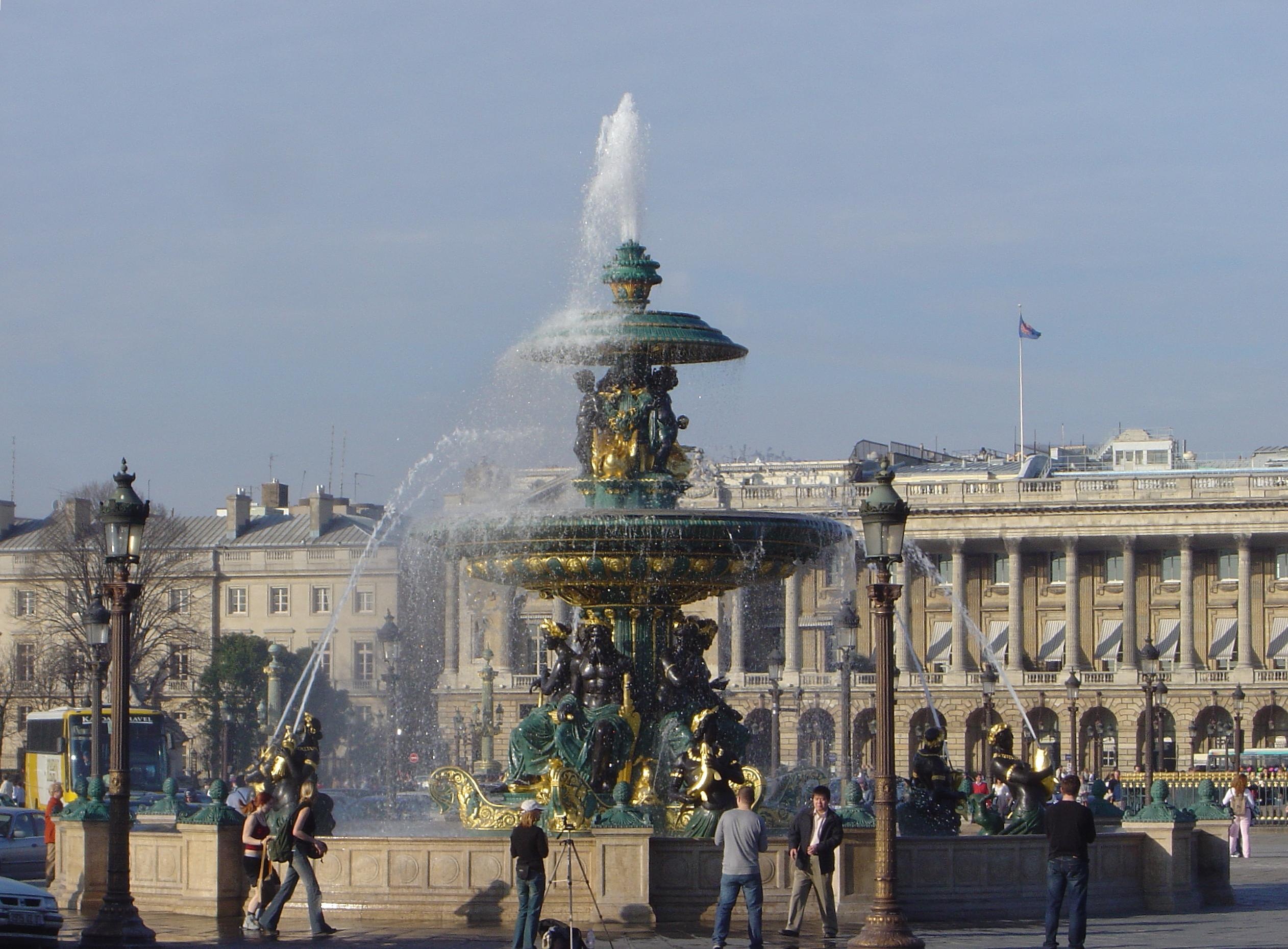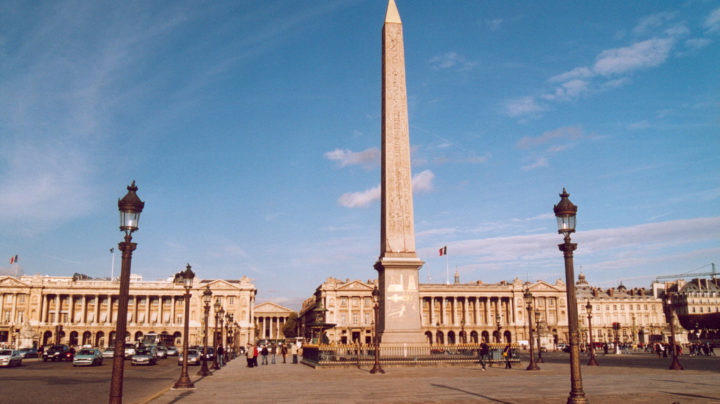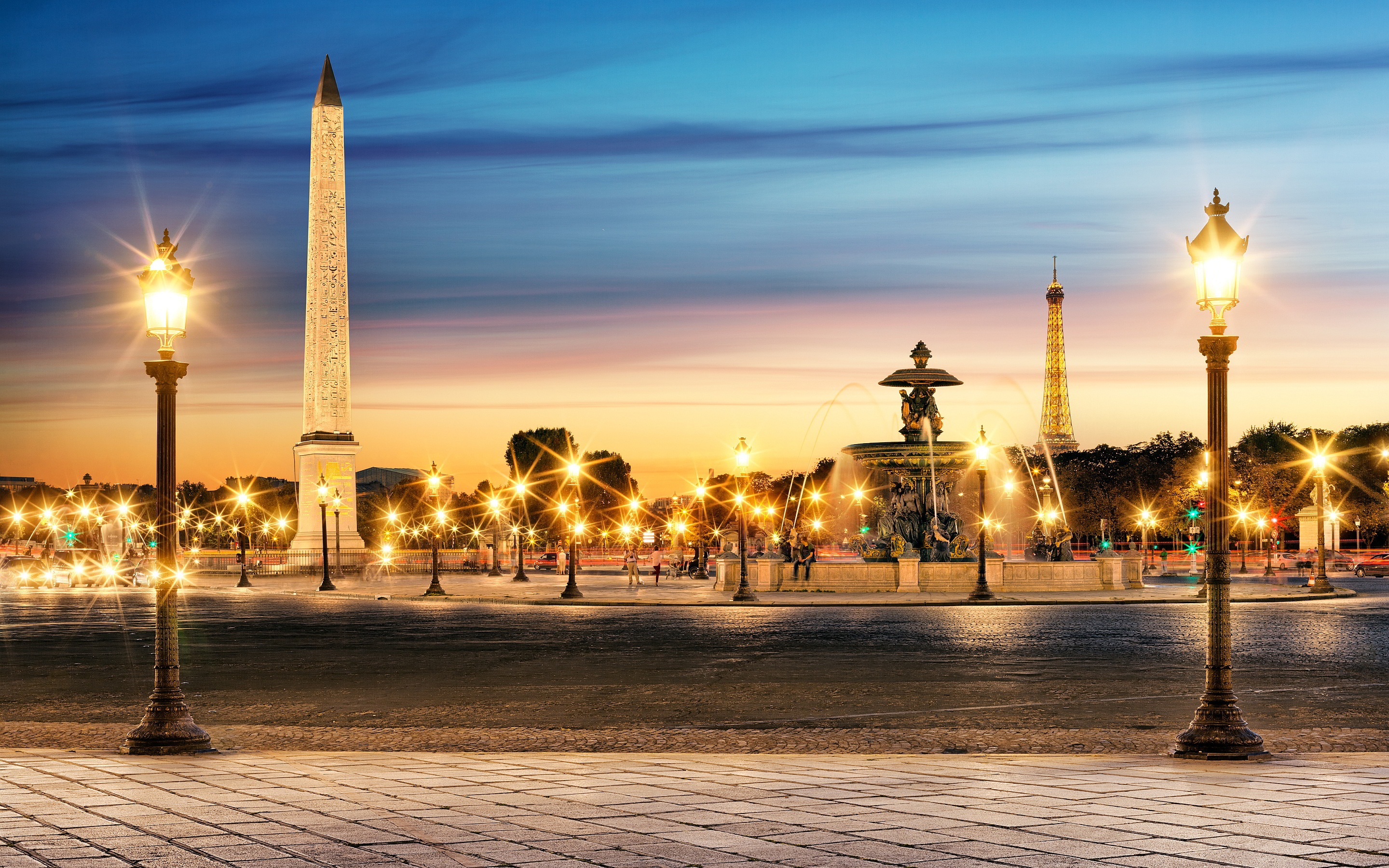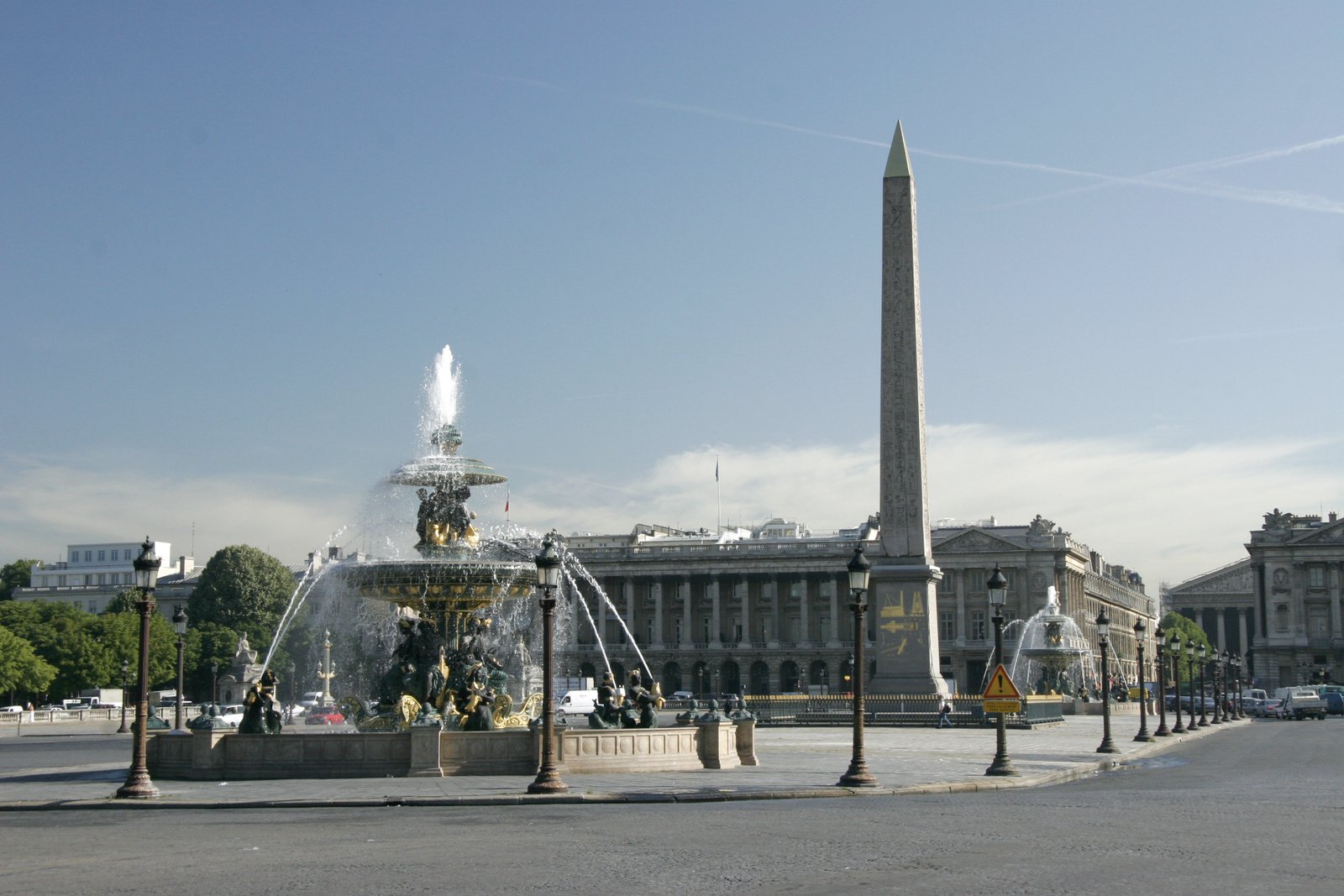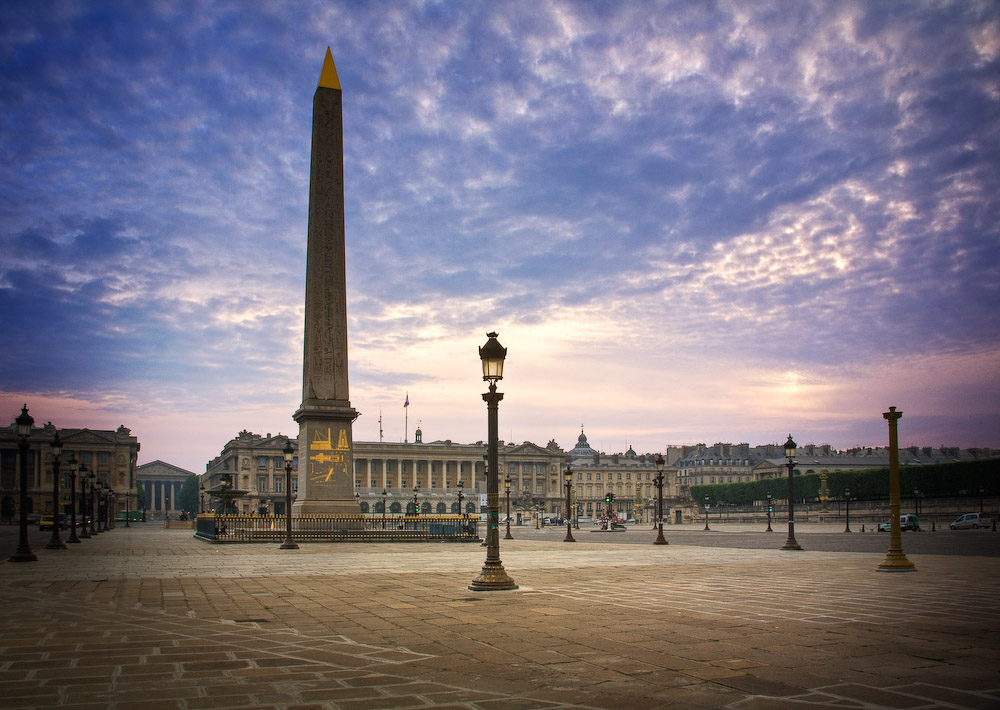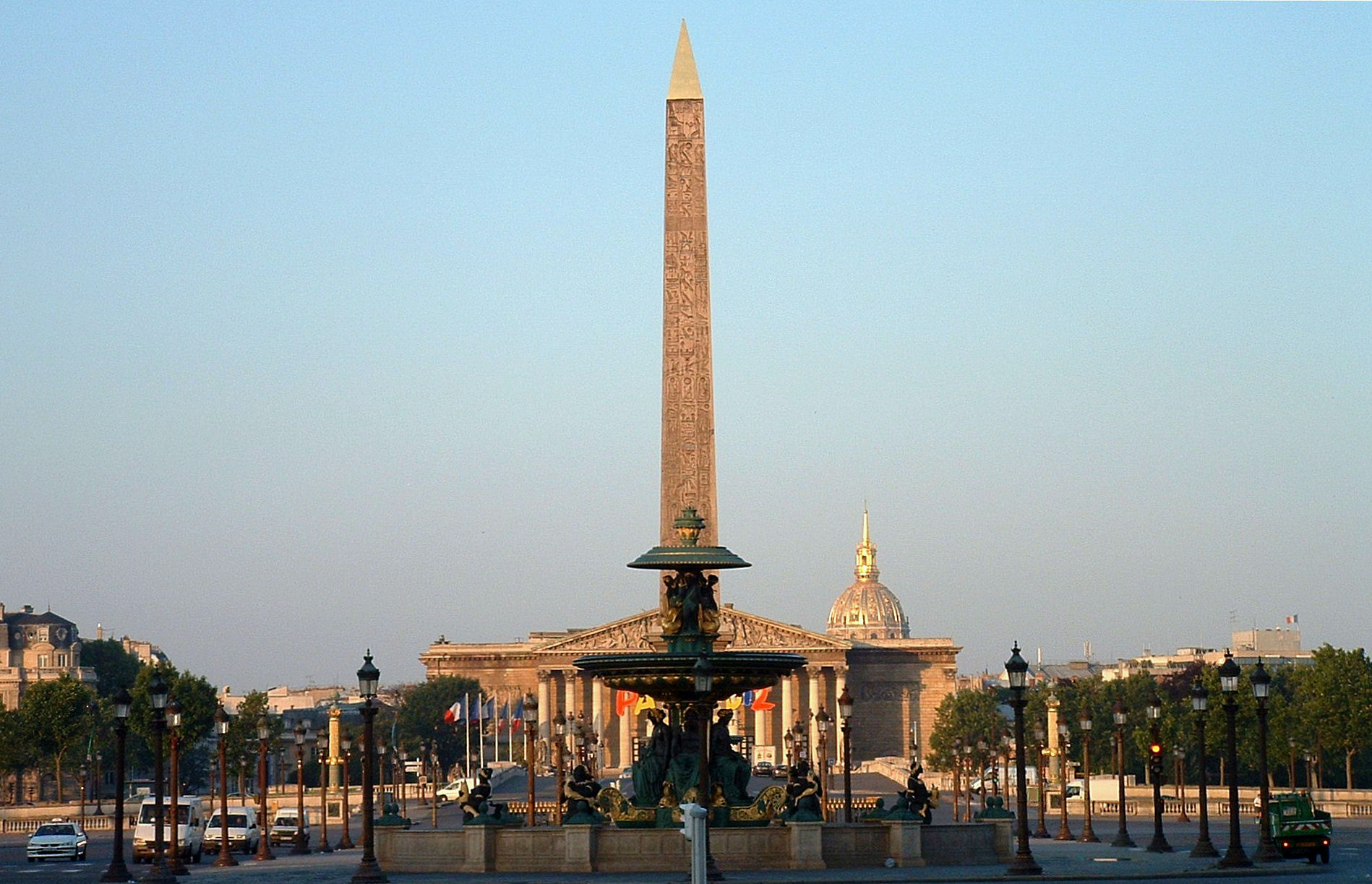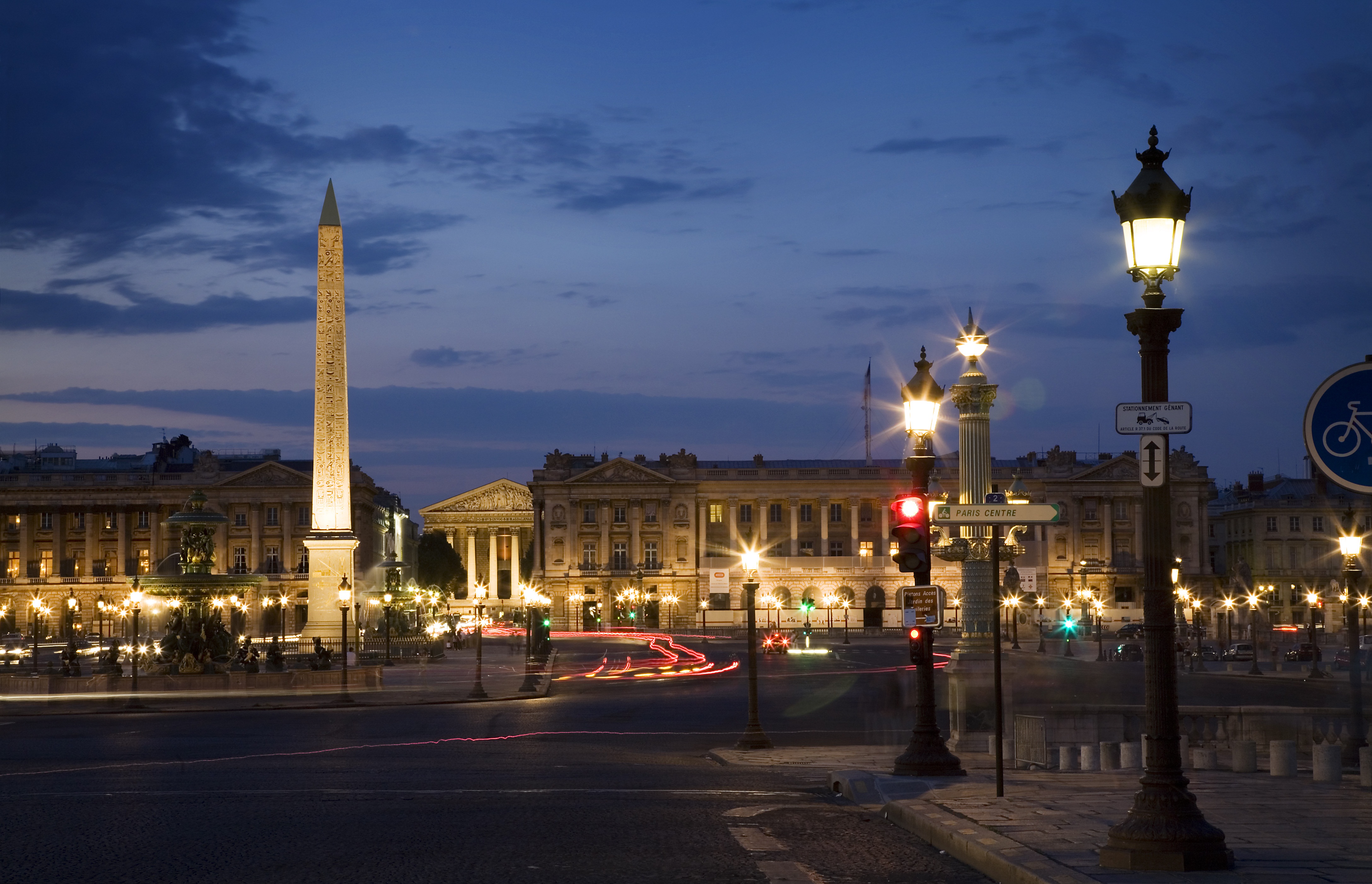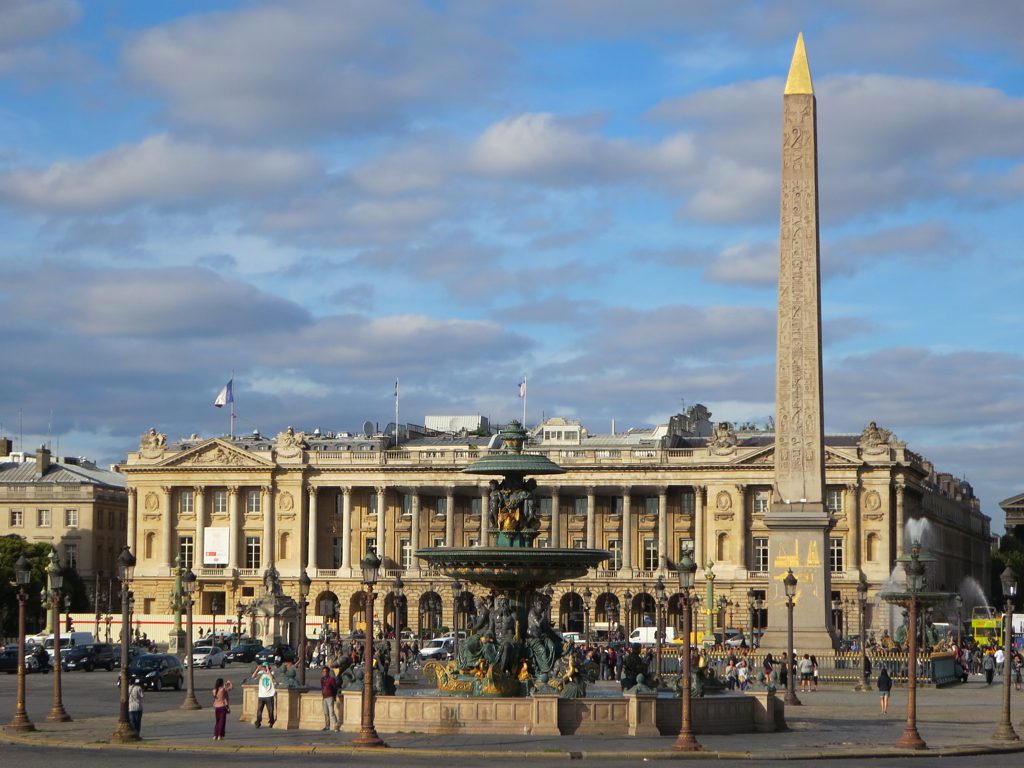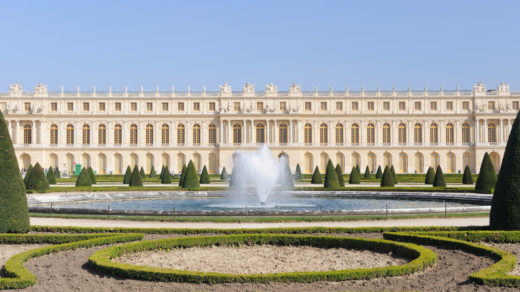Place de la Concorde could not be separated from the dark history of France as thousands of people ending their lives with a guillotine in the middle of the field, in front of the people. Days of the Reign of Terror led power Maximillian Robespierre at the end of the 18th century makes this place very monumental to commemorate that at one time was never a power alternating ruled France with their own style.
Standing on an area of 86,400 square meters, the Place de la Concorde is located in the south of the river Seine and is on the Axe Historique of Paris. Axe Historique is an imaginary line that divides the city of Paris, passing through places and historical monuments ranging from the Jardin des Tuileries to the east of Place de la Concorde, Avenue des Champs-Elysees, the Arc de Triomphe to the Grande Arche de La Defense at the western end.
Moreover, Place de la Concorde is also the intersection of the axis Axe Historique stretching from east to west by a straight line that runs from north to south. In the north Place de la Concorde, there are two exact same building, separated by a road Rue Royale. The buildings are the Ministry of the French Navy (French Naval Ministry) at the east and the Hotel de Crillon in the west.
Rue Royale itself culminate in a church, Eglise de la Madeleine, which is the home of King Louis XVI was buried after his death at the Place de la Concorde. To the south is the point de la Concorde, built by Jean-Rodolphe Perronet in 1787-1790 and culminate in a building across the river Seine similar to Eglise de la Madeleine in the north end earlier, Palais Bourbon.
Was once the residence of the royal family of France, is now the office of the French Parliament (French National Assembly). Place de la Concorde was designed by the architect Ange-Jacques Gabriel in 1755 and was originally named Place Louis XV for the development of this area is on the order of King Louis XV as a monument of respect for the king. In the middle of the field set up a statue of the king who was riding.
This statue was made in 1748 by Edme Bouchardon, and followed by Jean-Baptiste Pigalle after the death of Bouchardon. This statue was later destroyed during the French Revolution because it symbolizes the supremacy of the kingdom, as well as other properties associated with aristocrats were also destroyed.
After the statue of the king Louis XV demolished, Place de la Concorde looks very empty until in 1792 a stage and a guillotine was set on it. Even this place was renamed Place de la Revolution. During the two years of terror took place throughout France and no less than 1300 lives wiped out by the Reign of Terror.
Some evidence says that the first victim of the guillotine is not the king Louis XVI as it is often written in the story of this Place de la Concorde, but an armed robber. But it is the first nobleman who was beheaded at the guillotine was Louis XVI, followed by the nobility and the rich, including the empress of Austria, Marie Antoinette.
Just imagine, once it became a kind of venues where there were about 16,000 to 40,000 people were killed. Guilty or not, witnessed by hundreds of pairs of eyes were cheered after the guillotine separates the head with the body of the victim, as well as the lives of his body. Once, long ago the public was getting tired of watching these events, even feel scared because of cruelty Reign of Terror are rampant and unreasonable.
The climax is when the leader of the revolution, Robespierre began destroying any religious symbols in the city of Paris, including churches and sacred objects in it. It is considered as harassment of religious as he allegedly began to deflect the Revolution agenda and plans to become the sole ruler like a monarch first. Robespierre was then sentenced to death for treason against the Revolution and died by the guillotine on July 28, 1794.
Reign of Terror ended the era and set the stage and the guillotine was moved from the Place de la Concorde to the state penitentiary. Execution by guillotine itself does not stop right away, but they continued until 1981 with the abolition of the death penalty by the president Francois Mitterrand.
The terrible guillotine was later replaced with a beautiful and magnificent icon. An obelisk made of red granite. 3,300-year-old obelisk is part of the twin obelisks guarding the gate of the temple of Luxor in Egypt. In 1829 the Egyptian leader Mohammed Ali Pasha presented the obelisk to the king Louis-Philippe in 1836.
The body section of the obelisk lists hieroglyphics and pictures tells the reign of Ramses II in Egypt, while the sides of the concrete foundation of the obelisk illustrated diagram of the engine and the means used to transport the obelisk from Egypt to Paris. Obelisk the other one was also given as a gift to the French, but in 1990 President Francois Mitterand gave it back to the Egyptian government.
Obelisk of Luxor could be used as a giant solar clock (sundial) in Paris in the early 19th century but was never completed. Remnants of the draft initially you can see around the obelisk, there was a line of pink with a box containing Roman numerals are also several points in the form of metal plates embedded in paving Nearby Place de la Concorde.
On the left and right sides of the obelisk there are two fancy fountain works of Jacques Ignace Hittorff, an architect of German descent. After the French Revolution ended, the king Louis-Philippe rename the Place de la Revolution into Place de la Concorde (Concorde = agreement), then the fountain that was built in 1833 until 1840, coinciding with the establishment of the obelisk of Luxor in the middle of Place de la Concorde. There are two pools were built; each is a symbol of the power of France in the field of water.
Fountain in the north is a symbol of the power of commerce and industry of France in the maritime sector (international), while the fountain on the south side is a symbol of the power of navigation and trade of rivers in France (local). Place de la Concorde shaped symmetrical octagon has eight statues in the corners, representing the eight major cities in Paris and created by local architect of the area.